
Disperse the Riverbed: Resolving Lingering Post-Viral Symptoms
Many people are struggling with residual post-viral symptoms. Some experience symptoms long after the positive state of the virus has passed. The Triple Heater (San Jiao) acupuncture channel is essential in the treatment of post-viral convalescence. Once the “positive” state of the virus has past, many people still experience symptoms, often respiratory weakness, fatigue, low-grade inflammation, headaches, body aches, insomnia, anorexia, digestive upset, and even high blood pressure. Most patients require assistance in rebuilding their vitality after the illness. Acupuncture treatment can be very helpful.
The Triple Heater is perhaps the most mysterious and least understood of all the acupuncture channels. It regulates the Fire-Water balance in the body, chiefly inflammation and fluid metabolism. The Triple Heater treats “water” and “heat” diseases, which are seen in post-viral cases.
The recovered post-viral patients I’ve been treating in my acupuncture clinic require assistance in strengthening their respiratory function, clearing residual congestion from their heads, soothing the muscles and joints of the body, and clearing “tidal” heat – residual inflammation in the body that comes and goes, causing periodic fatigue and aches.
The Triple Heater acupuncture channel treats the aftereffects of “pestilent qi” (epidemics and pandemics), especially those that are mysterious, and begin to damage a person’s immune and neurological systems and organs of water metabolism (lungs and kidneys especially). Triple Heater addresses the damage to the fluid system of the body of which immune function, respiration, digestion, sleep and even the mind and emotions are reliant.
The acupuncture points I’ve found most effective in treating residual symptoms are those located on the upper arm, shoulders and scapular regions. Names like “Clear Cold Abyss” and “Disperse the Riverbed” speak to their capacity to clear inflammation and contamination to the fluid system (the “rivers” and “seas” of the body).
The point “Celestial Well” (TH-10), located near the elbow, treats “phlegm,” seen in Chinese medicine as the root of insidious conditions that lurk and linger, causing propensity for weakness and further illness and vulnerability. When the “qi”: movement and transformation capacity of the body (an aspect of fluid metabolism) has been damaged by the body’s inflammatory response to a virus, phlegm is often the result. Phlegm is most commonly seen to weaken the respiratory system, causing coughing and wheezing. But phlegm can also cause muscle ache, numbness, headaches, fatigue, lowered immunity and digestive weakness. To transform phlegm is to eliminate the terrain that holds onto toxicity. It is a detoxification process that requires not only elimination of stagnant fluids, but also strengthening of the body’s ability to transform and transport nutrients and waste. TH-10 is especially effective is eliminating “damp-phlegm” residing in the channels of the body, which causes weakness of the limbs, head congestion, even numbness and swellings.
“Clear Cold Abyss” (TH-11), also located near the elbow, is effective in clearing congestion in the limbs and head, causing weakness, fogginess, aches. The image of the “abyss” suggests this points clears very deep regions of the body where pathology and toxicity can lurk and hide. When we have latent toxicity lingering in the body we will feel as if our strength, vitality and ability to recover from challenge and change is weakened. TH-11 also treats “fright” palpitations, which are often accompanied by agitation, anxiety and restlessness, showing latent heat is hiding in the body, usually emerging at night to disturb one’s sleep. Agitation, phlegm congestion, fullness and heat in the chest are common after a severe illness.
The “Celestial Hole in the Bone” (TH-15), located on the scapula is a good point to combine with TH-11 due to its function in “unbinding the chest.” Phlegm congestion, as well as weakness or numbness of the limbs requires tension in the chest be loosened. TH-15 is also effective in treating acute bouts of high blood pressure, which can often occur during and after an illness. The “spirit” of TH-15 is to reconcile oneself with “heaven,” or the feeling of being punished for our behavior. It also addresses our relationship to the challenges in our lives, which may feel harsh or unfair. By loosening the chest, we can enter a state of “surrender” so we can accept our fate, forgive ourselves and focus on regaining or strength, courage and vitality.
TH-15 is especially effective in resolving chronic shoulder pain. Chinese medicine recognizes unresolved pathology, often kept latent and lingering due to phlegm, is translocated into the joints, especially the shoulder and scapular region. TH-15 and its neighboring point SI-12 “Grasping the Wind” are located in holes in the scapular bone where strong pathology such as virus can enter to remain in a lurking state. To clear the shoulders, and joints in general, is a very important strategy for resolving lingering latent conditions.
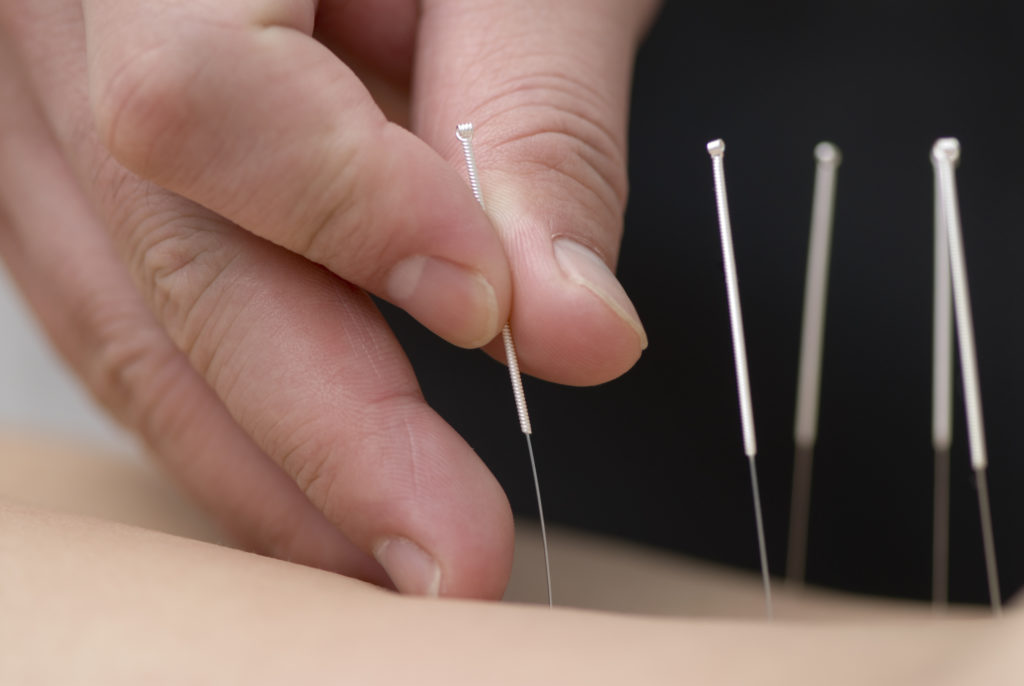
The doctor uses needles for treatment of the patient
“Disperse the Riverbed” (TH-12) is a point whose name provides an image for detoxing latent pathology from the joints and bones. TH-12 acts like an environmental conservation agency, clearing pollution from the areas inhibiting movement of qi-vital energy, blood and fluids. Stagnation often occurs in the body due to toxic overload. Tension in the body, swelling in the joints, inhibition in respiration and digestion is all due to stagnation. When the humors of the body aren’t moving with ease and smooth flow, this will reduce the body’s capacity to create new blood, metabolize food and fluids and new qi-energy. Great tension can increase the blood pressure, and lead to simultaneous agitation and fatigue.
Classical acupuncture strategy aims to address the totality of a person’s experience with a condition, including their present symptoms, its origination as well as protection against progression or a worsening. In the case of post-viral convalescence, the Triple Heater channel addresses many of the lingering symptoms, while the Small Intestine’s acupuncture channel will address the viral origination. Classically, Small Intestine was the acupuncture channel used to treat “pestilent qi” in the form of epidemics. Small Intestine has a particularly strong effect on the spine, head and nervous system in general which can become disturbed by viral conditions. Virus can “hide” in the areas around the spine, as well as the sinus and bony regions of the head, in addition to the joints, scapula and sacral areas. Small Intestine provides a very strong surge of “Yang” energy to expel “wind,” the classical image for any pathology originating from outside the body, including virus.
The protective acupuncture channels indicated for post-viral convalescence are the Bladder’s channel, especially the “Shu-transport” points on the back, adjacent to the spine. The Shu points have direct impact on the function of the internal organs, making them some of the most strengthening acupuncture points on the body. The particular Shu points that may be most effective are those that impact the Kidneys, Spleen and Lungs: the three organs most involved with fluid metabolism, as well as the Shu point for the Liver and Heart to effect the movement and creation of blood. In Chinese medicine, the movement of blood is the most effective way to “expel wind,” allowing the body to fully resolve a condition.



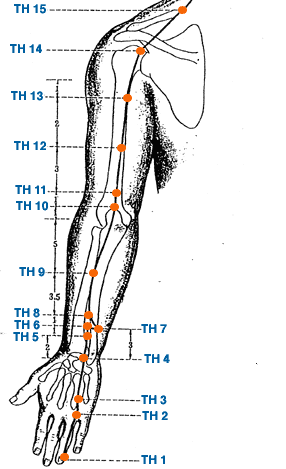
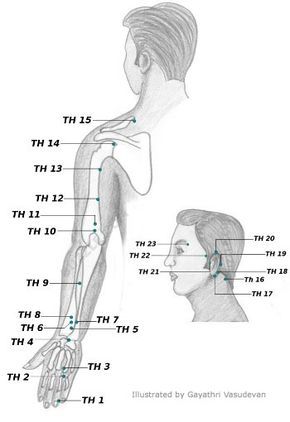
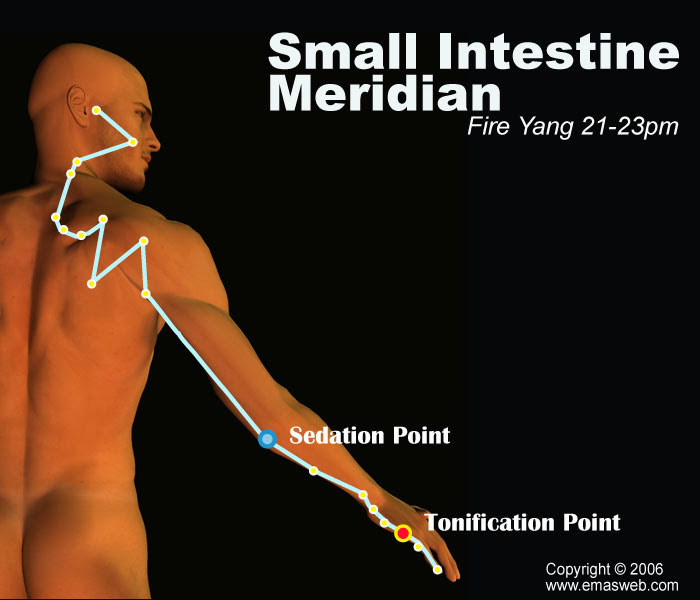
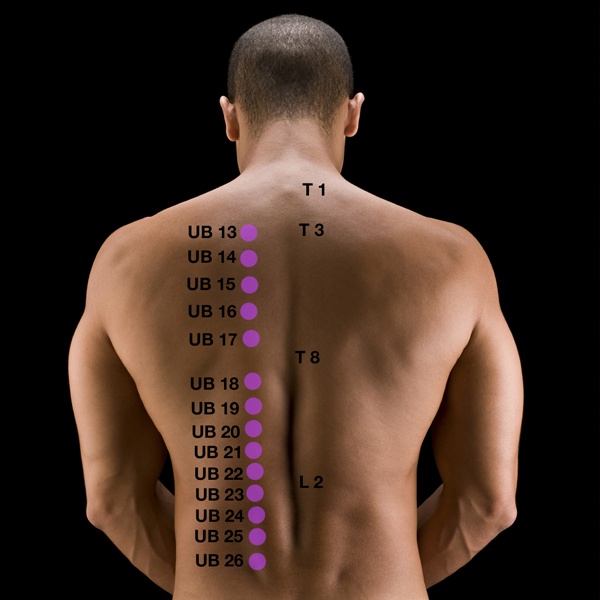



No Comments